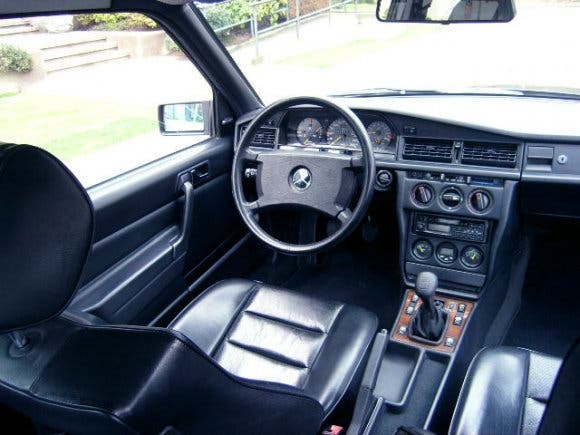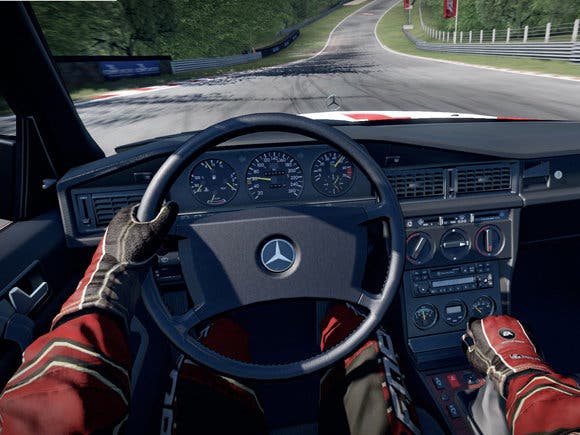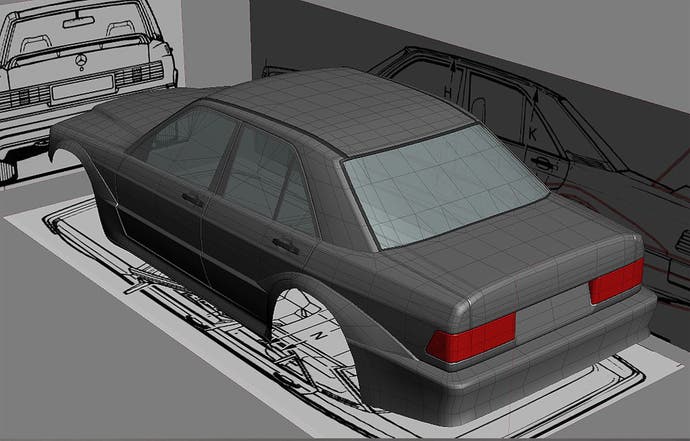The Making of Shift 2 Unleashed
How to pull a double shift.
Quite aside from the rendering issues, the basic logistics in making a racing game as content rich as Shift 2 are quite staggering. What's the process in making just one of the 140 cars in the game? How do game developers ensure that the real-life tracks are accurate representations of the actual locations? And perhaps most crucially of all, how does the car simulation itself actually work? To what level is it actually authentic and is this the best way to make a fun racing game?
"For modern cars the manufacturers provide us with CAD data, images from official photoshoots, car specs, technical details, and a whole other bunch of information - anything we can get our hands on basically! The car is then completely remodelled to reasonable game specs using the CAD data as reference for accuracy," reveals vehicle lead Jan Frishkorn.
The only problem here is that many racing games - Shift 2 included - also include older cars created before CAD tools were available. Here, blueprints and photos are amassed by researchers before modellers recreate those vehicles from scratch.
"Car production starts with modelling the high-detail LOD exterior of the car, followed by the first-person cockpit," Frishkorn continues.
"After this, the textures for both are then created and the fine details are added: realistic windscreen reflections in the cockpit, interior animations (vibrating mirrors and hoods), animated parts (rear wings, popup lights etc), individual drivers, realistic multi-function dashboard displays and gauges, gearstick and shift animations, individual HUD gauges, authentic racing liveries, full crash damage setup for the car body and a pretty complicated setup for all the available upgrades and customisation options. Obviously, these features all take a lot of time to get them to perfection!"


This entire process can take anything up to two months from start until completion with two artists on the job: with 140 cars in the Shift 2 roster, that's an incredible amount of effort. The physics simulation itself is similarly complex.
"The physics model is a full 3D scope engine capable of creating the car dynamics based on parameters taken from the specs of the real-life car - those provided by manufacturers directly and those provided from extensive research," observes physics lead Doug Arnao.
"Chassis, suspension, aerodynamics and tyres all generate their forces in 3D in real time. We run these models and recalculate the car state at 400 times per second, which makes for a very convincing experience as nothing is left to guesswork."
Just the chassis itself features around 150 parameters ranging from weight, CG heights and positions, plus weight and inertia of sprung and un-sprung masses, along with spin inertias of un-sprung items such as brake discs and wheels. There are 3D suspension geometry parameters for all inner/outer points of a double wishbone along with the tie-rod and damper placements. And this is just the tip of the iceberg for this single element in the car's make-up.
"The tyre model is based on the 'brush model' slip curve generation. Core parameters here include: cornering/braking/self-aligning stiffness, load and camber sensitivities, heating parameters, rolling resistance and base grip of the rubber in longitudinal/lateral directions. The tyre model therefore is class-leading (if not the best) in the sim industry," Arnao argues.
"Finally, the engine model uses a standard rpm/torque curve lookup in 250rpm increments. Some parameters are: rotating inertia, accel friction drag, deccel drag, heating. Turbos are modelled as separate components with their own separate physics and can be bolted on to directly effect it as in the real world."


Art director Andreas Moll explains the process behind adding real-life locations to the game.
"For existing tracks we mainly use GPS and CAD data which contain the track layout/width/elevation, armco placement and style, and gravel bed/kerb/tyrewall positions," he says.
"Because many tracks are constantly changing in real life, however, we then proceed to get the very latest reference data from photo-shoots and research also in order to ensure the most up-to-date version of the track is meticulously recreated."
However, there is a real sense from the Slightly Mad team that physical precision within the confines of their simulator is just the first step in creating a good racing game. Sometimes the core maths just don't equate to an exciting game. Many have described Forza and GT as somewhat clinical in their approach, while Shift is more visceral, and the developers have an explanation for this.
"What we found is that what is 'mathematically' correct in-game doesn't always necessarily 'feel' correct when playing due to the different field of view you are viewing the action from," Moll explains.
"Take Eau Rouge at Spa for instance - one of motoring's most iconic stretches of tarmac. Originally we input the CAD data and modelled the elevation change exactly as it is in real life. But when we came to play it, it just didn't feel like the terrifying climb that it is in reality, mainly because you don't get the same physical feedback you have racing it in real life when lounging at home playing on the sofa."
Slightly Mad plugs in the maths but makes changes and enhancements so that the feel of the game is more in tune with the emotion of racing as opposed to putting the mathematics first.
"In reality Eau Rouge is brutal - hitting the bottom of the climb makes your stomach lurch and your neck compress - all sensations that tell you of the elevation change and that can't be conveyed to the player via DualShock," Andreas Moll continues.
"So, similar to other areas of the game where we simulate physical experiences (G-force head movement, crash dynamics), we enhance the technically correct data in order to recreate the real-world sensation. So in this case, we increased the elevation change, playing around with differing values until the game yielded the true feel - making Eau Rouge back into one of motorsport's most demanding and exciting corners."








